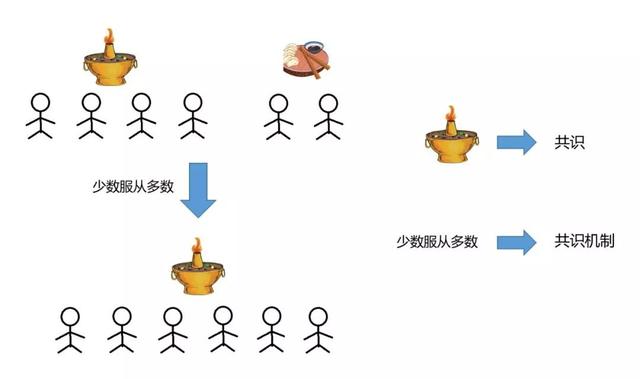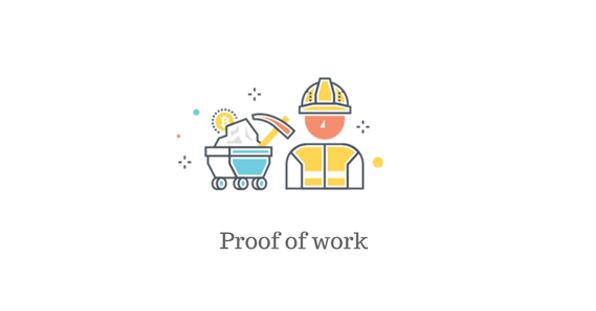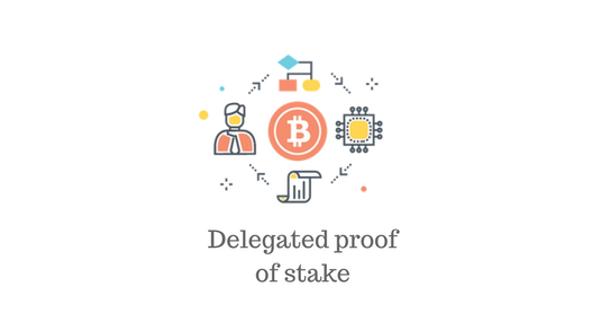What is the consensus mechanism of popular science to blockchain
The "Coin All 101" series is a series of blockchain science popularized columns for new entry users, allowing zero-based partners to get started easily.
When you read some blockchain related materials, you will always see the term " consensus mechanism ", as well as English abbreviations such as PoW, PoS, DPoS . So let's talk today, what exactly is the consensus mechanism of the blockchain, and what does PoW, PoS, DPoS represent.
What is the consensus mechanism of the blockchain
Blockchain is often referred to as a tool for transmitting trust, and the trust behind this trust is the consensus mechanism . The blockchain can be regarded as a distributed ledger with the participation of the whole people. Then we need to formulate a set of rules that everyone agrees to accept to solve the problems of "how to record effectively" and "who chooses to record." Is the consensus mechanism of the blockchain.
- What challenges does the blockchain face in the real economy? Academic experts think so
- Japanese financial giant SBI considers using XRP to pay shareholder dividends and further strengthens partnership with Ripple
- Make wedding dresses for others? Cryptocurrency mining virus may be secretly letting your computer help others mine
To facilitate understanding, let us give an example. Six people in a dormitory are going to have dinner. After discussion, they choose to eat hot pot, so eating hot pot is a consensus formed by everyone . In the negotiation mode, the minority obeys the majority is the consensus mechanism for everyone to determine where to eat .

In the blockchain world, due to its decentralized nature, there is no central bookkeeping institution like a bank to ensure that all bookkeeping contents on the chain are consistent, so how to make the entire network reach consensus Vital. The consensus mechanism is used to solve this problem. It can be said that the consensus mechanism is the core of a distributed system .
In the consensus mechanism, PoW, PoS, and DPoS represent the three main accounting rules of the blockchain network. Their functions are very large and directly related to the distribution of accounting rights and related benefits. The three main consensus mechanisms are introduced below.
Second, the current three main consensus mechanisms
PoW (Proof-of-Work) workload proof mechanism

A proof of work is a certificate that confirms the amount of work you have done. The proof-of-work mechanism is to prove your contribution value through the workload , and then determine the bookkeeping right and reward according to the size of the contribution value.
In the blockchain world, this proof process relies on computers to perform mathematical operations. It can be simply understood that, when everyone answers the same question together, the person who calculates first has the right to keep accounts and can get the corresponding reward, which is the digital token generated by the network. This is also the process of BTC output. In the BTC network, whoever solves the problem first can get BTC as a reward.
The advantages of PoW are: first, the accounting rights and rewards are determined by the workload, fairness and fairness , and fair competition between nodes (users); and second, complete decentralization , which does not require a centralized management agency, The system can operate on its own accord.
The disadvantages are waste of energy and inefficiency . Participants calculate the same subject together, but only one person can finally get the right to book. All others do nothing. However, a large amount of power resources will be consumed in this process. For example, BTC is generated using the PoW consensus mechanism, which consumes billions of dollars of electricity each year. In addition, the number of nodes on the chain is huge. Based on the point-to-point characteristics, when the first person who answers the question announces and claims the accounting rights to the entire network, this process is very time-consuming, so under the PoW mechanism The efficiency of reaching consensus on the entire network is extremely poor.
PoS (Proof-of-Stake) Proof-of-Stake Mechanism

Proof of equity is based on the system's related equity—tokens, as a consideration for dividends and selection of bookkeepers . The longer the number of tokens held, the longer the number of token days (the number of token days = the number of holdings * the holding time), the easier it is to be selected as a user representative for bookkeeping. Because the token is the holder's equity in the blockchain system, this method is called equity-based certification, which is similar to the stock dividend system.
The advantage of PoS is that first, it consumes less energy , compared to PoW, it does not require a lot of energy consumption; second, the cost of evil is high , and if you want to attack the network, you must have 51% of the number of token days, not only a lot of It is difficult to hold a long enough token, and thirdly, it takes a short time to reach a consensus . If the network environment is good, millisecond speed can be achieved.
There are two disadvantages of PoS. First, tokens tend to be centralized , because the distribution of income depends on the amount and time of holding the tokens. In order to obtain more tokens, the tokens will gradually be concentrated; Secondly, if the liquidity becomes worse , there will be income distribution when the token is held, and the holder will not have the motivation to cash out, which will result in the poor liquidity of the token.
DPoS (DelegatedProof-of-Stake)

DPoS is generated on the basis of PoS. Under the PoS mechanism, people who hold a small number of tokens rarely have the opportunity to be elected bookkeepers. In order to be able to obtain the right to book, they discussed the use of the DPoS mechanism, that is, by voting, the producers were selected to perform their rights and obligations on their behalf . On behalf of the nodes take turns in bookkeeping to obtain dividends, and the node gets a portion of the total bookkeeping (mining) revenue as a reward, which is distributed to voting users. If the producer is incompetent, he may be voted out at any time. The voting weight and distribution income are calculated according to the percentage of the total number of crypto tokens held. The voting result of 51% of shareholders is irreversible and binding.
In fact, the DPoS mechanism is similar to a joint-stock company in reality. Ordinary shareholders cannot enter the board of directors to participate in the management of the company. They must form a board of directors by voting for representatives, and elect people who can represent their rights and interests based on voting weight. In the chain, an agent is elected to keep accounts.
The biggest advantage of DPoS is that the number of bookkeeping nodes is greatly reduced and the bookkeeping efficiency is high . The disadvantage is that the degree of decentralization is weakened, and accounting is performed by the selected representatives, and there is a certain degree of centralized control.
Third, the conclusion
At present, no consensus mechanism is perfect, and each has its own shortcomings. With the continuous development of blockchain technology, the consensus mechanism will continue to be optimized, and the future is expected.
We will continue to update Blocking; if you have any questions or suggestions, please contact us!
Was this article helpful?
93 out of 132 found this helpful
Related articles
- Sheknows | Together, the alliance chain and the public chain have the same goal?
- The last decade of blockchain: Looking back at 2010 to 2020
- Learning to Power: Hainan's Blockchain Development Attracts Global Attention
- 38,000 new addresses added in one day, DeFi and Istanbul upgraded to inject new blood into Ethereum
- Xiao Lei: Blockchain is the next Internet + dollar super system, and the only US opponent is China
- Microsoft blockchain cloud platform Azure launches non-homogeneous tokens to reward active community participants
- Zhu Jiaming: Blockchain is likely to bring a "paradigm revolution" in the scientific field





